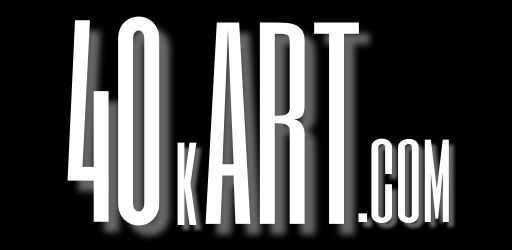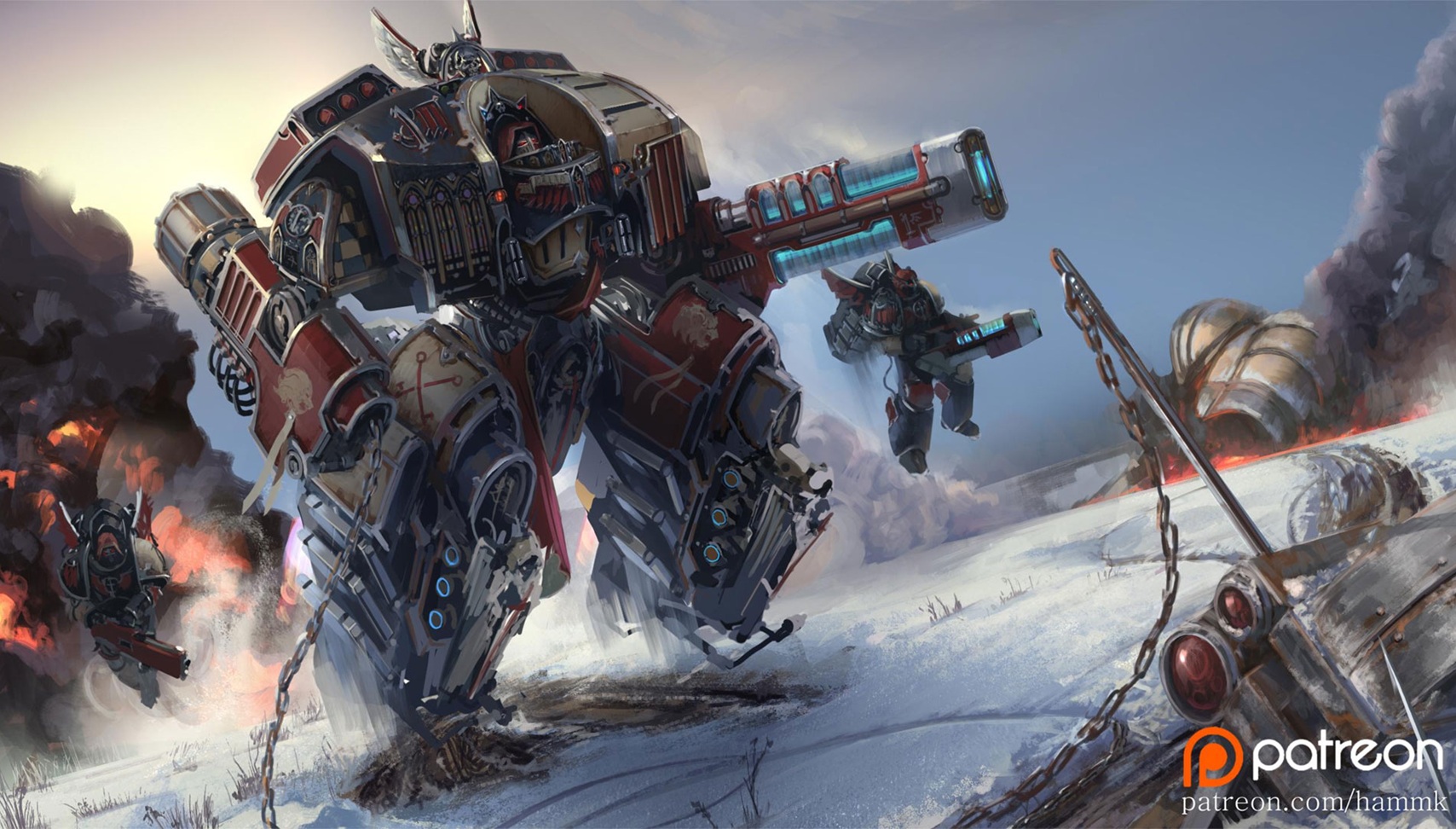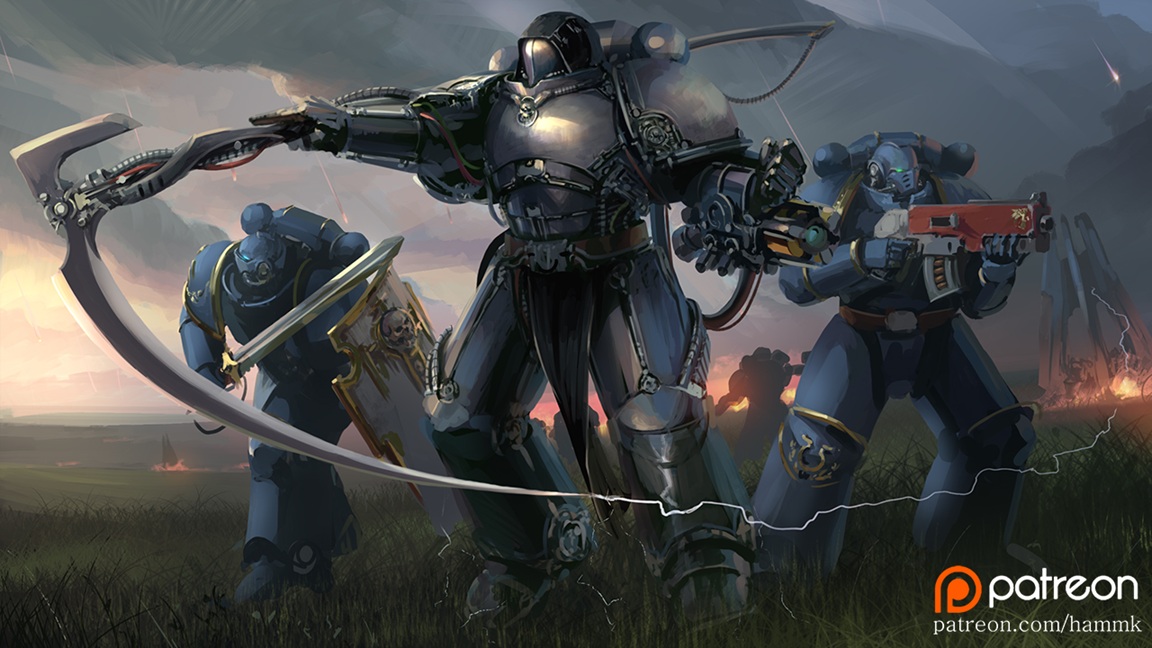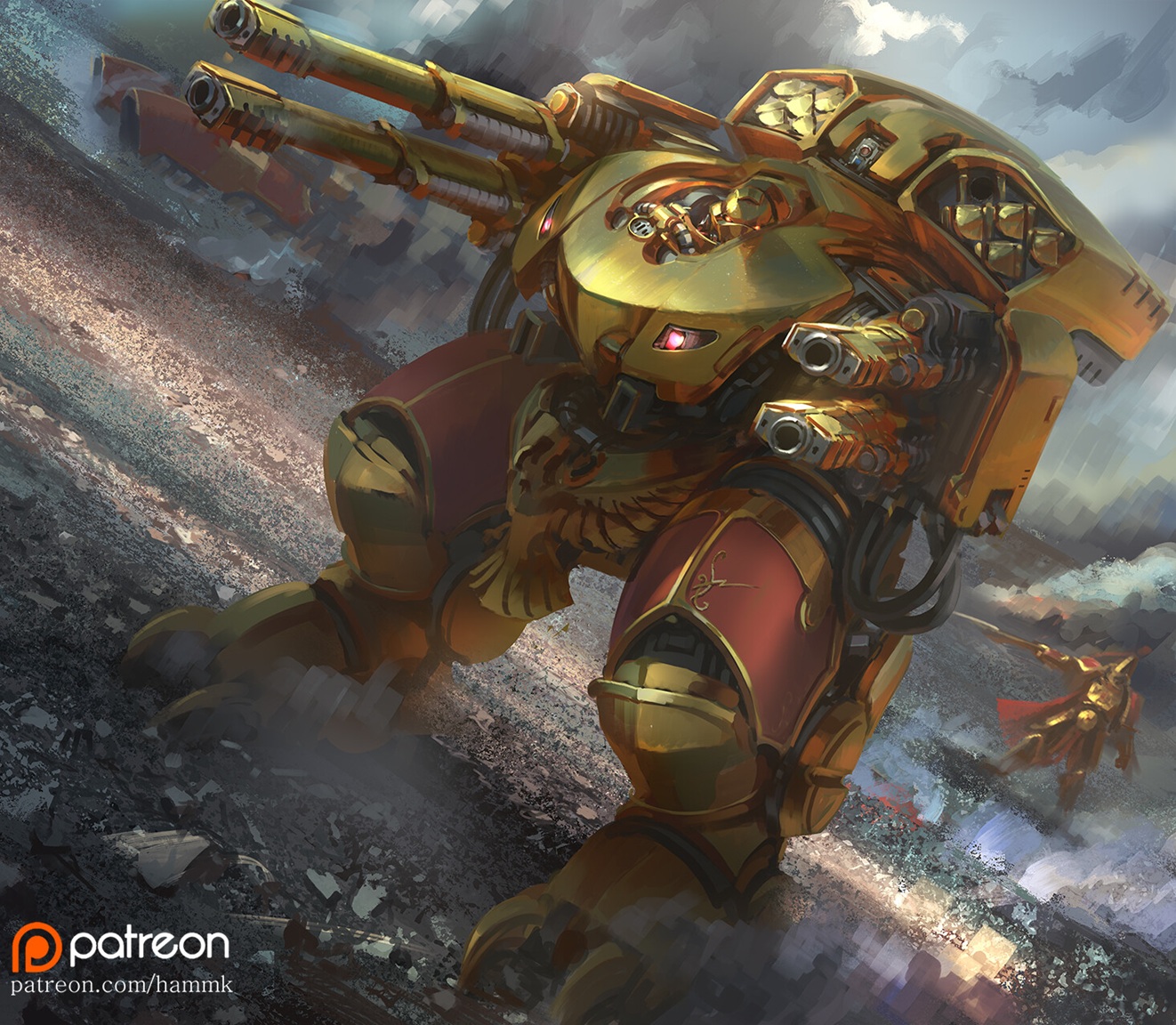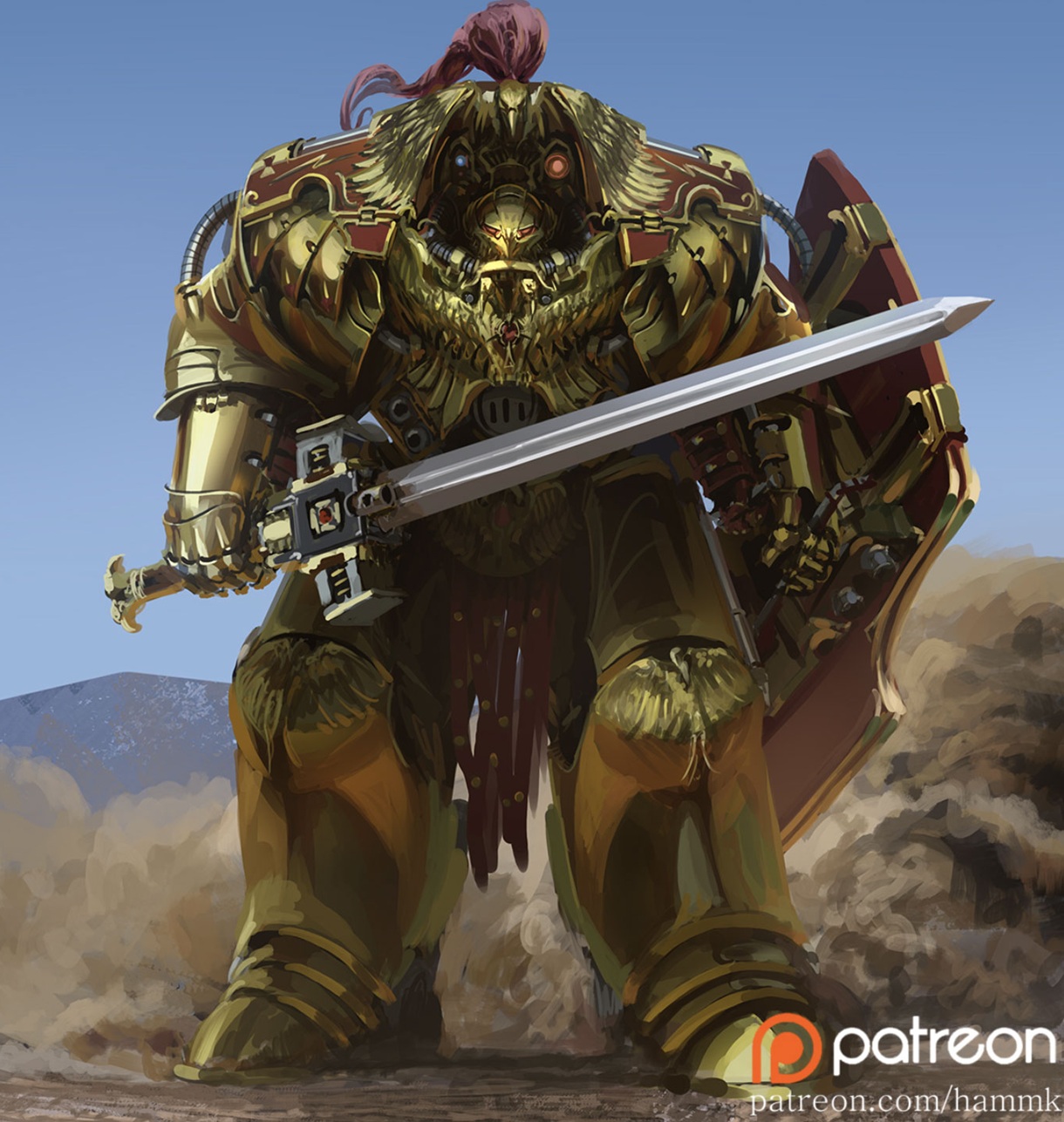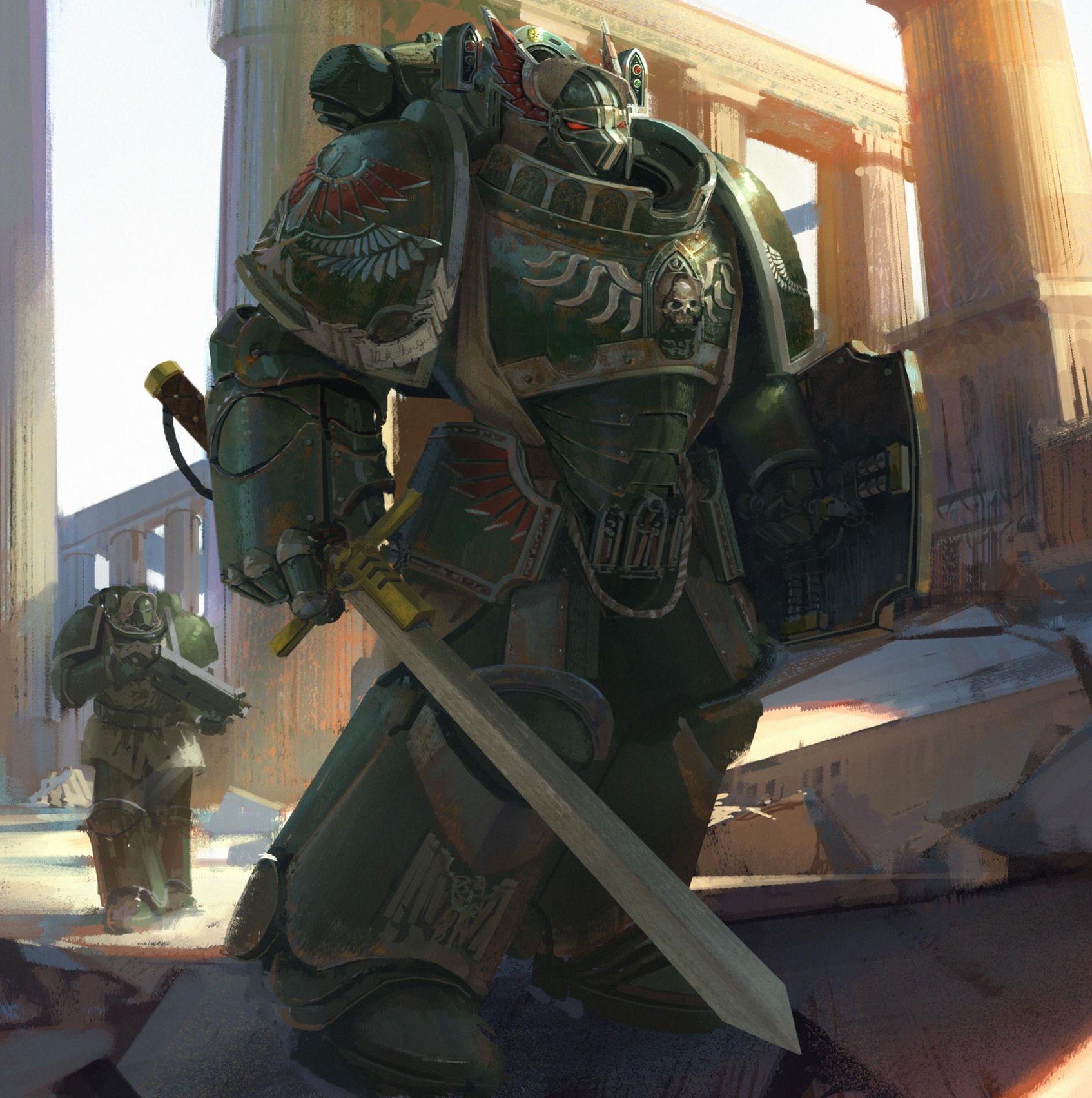
The Lion’s Guardians: Dark Angels’ March Through Secrets
The Lion’s Guardians on the March
This artwork captures a towering Dark Angel Space Marine in ornate green armor, striding through a ruined, sunlit temple. His massive shield is emblazoned with chapter iconography, and a two-handed sword is clutched in one fist, glowing with quiet menace. The sunlight highlights the worn edges of his armor, suggesting a long campaign and countless battles fought. A second Dark Angel follows behind, bolter raised, watching for threats amid the broken columns. The surrounding environment evokes a classical ruin—perhaps a fallen Imperial shrine or lost city reclaimed by the Imperium. The imposing figure in the foreground walks not with haste, but with absolute purpose, as if destiny itself bends to his march.
Shadows of Caliban: The Dark Angels’ Legacy
The Dark Angels are one of the most enigmatic and ancient Chapters of the Adeptus Astartes, being the First Legion created by the Emperor during the Great Crusade. Their homeworld was Caliban, a place steeped in mystery and darkness, where their Primarch, Lion El’Jonson, was raised among knightly orders. What sets them apart, beyond their martial discipline, is their obsession with secrecy and redemption. This stems from the shameful events of the Horus Heresy, when a portion of their Legion, later known as the Fallen, turned traitor. Ever since, the Dark Angels have hunted these Fallen in secret, even from other loyalist forces. They carry the burden of their legacy alone, swearing to restore their honor at any cost.
Iconography and Symbolism
The armor in the artwork is rich with symbolism—winged swords, robed figures, and hooded visages echo the Dark Angels’ themes of judgment and penitence. The red and bone details contrast with the deep green plate, giving the marine a heraldic, knightly appearance. The gothic aesthetic of their gear blends seamlessly with the ancient setting, reinforcing their identity as grim, monastic warriors. The sword and shield, while functional, also evoke imagery of ancient paladins standing against corruption and heresy. Even their helmets are shaped to resemble stoic masks, hiding any hint of emotion or humanity beneath the ceramite. This visual stoicism is a reflection of the Dark Angels’ inner discipline and their refusal to show weakness.
The Hunt for the Fallen
While the Dark Angels perform their duties like any other Chapter on the surface, beneath their strict hierarchy lies an inner circle that guards their greatest secret. These select few know the full truth of the Fallen and the shame that stains the First Legion’s name. Entire campaigns are launched under false pretenses, their true purpose to track down and capture a single wayward brother who once fought alongside them. Those outside the Chapter know little of this, and those who learn too much often do not live long after. This duality—proud warriors on one hand, secretive hunters on the other—defines much of their lore and colors every decision they make. In war, they are silent angels of death, but behind closed doors, they are inquisitors of their own past.
